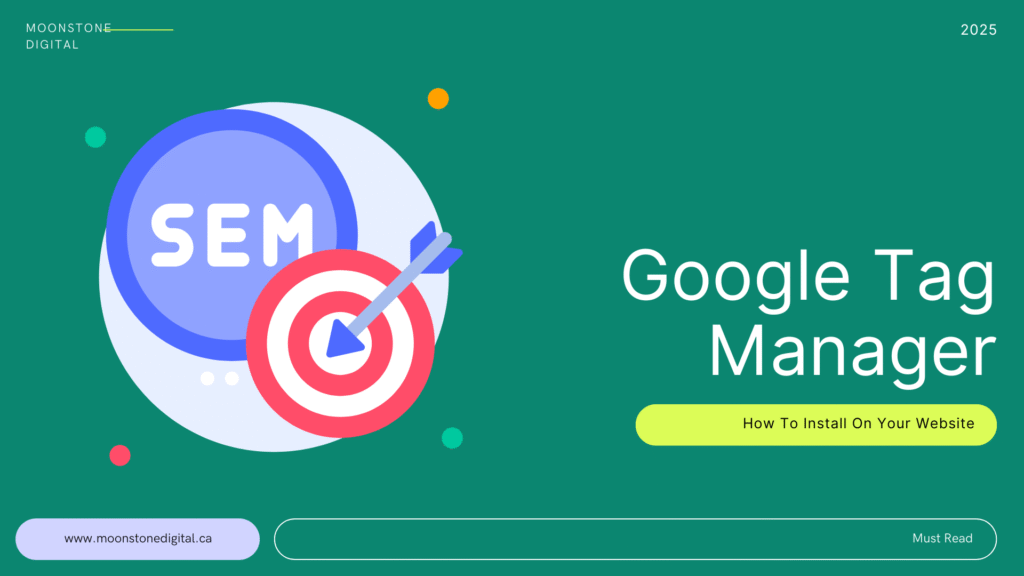
In the world of performance marketing, precision is everything. And in 2025, the most agile businesses aren’t guessing, they’re tracking everything. That’s why Google Tag Manager (GTM) has become a non-negotiable tool for business owners and marketers running Google Ads.
GTM bridges the gap between advertising spend and real-time, actionable data. In this post, we’ll explore why GTM is essential, how to set it up, and what to track,so you can stop wasting budget and start scaling with confidence.
Why Google Tag Manager Matters in 2025
1. Centralized Control Without Code
Google Tag Manager is a free tool that allows you to manage all your website tracking scripts (tags) from a single interface, no developer is required. Whether you’re tracking conversions, form submissions, or remarketing audiences, GTM gives you full control without constantly touching your website’s code.
In 2025, with consumer behaviour shifting faster than ever, GTM helps businesses adapt instantly to what’s working. A/B testing a new landing page? Launch a conversion tag in seconds. Want to retarget visitors who clicked your ad but didn’t buy? GTM makes that easy.
2. Accurate Google Ads Conversion Tracking
Poor tracking leads to poor decisions. GTM plays a critical role in sales funnel marketing with Google Ads, from measuring top-of-funnel clicks to bottom-of-funnel purchases. Without GTM, you’re flying blind.
Step-by-Step: How to Install Google Tag Manager on Your Website
Step 1: Create a Google Tag Manager Account
- Go to tagmanager.google.com
- Click “Create Account”
- Add your business name, container name (usually your website URL), and choose the platform (Web, iOS, etc.)
Step 2: Add GTM Code to Your Website
After setup, GTM provides two code snippets:
- One goes in the <head> section
- The other goes right after the opening <body> tag
If you’re using WordPress, Shopify, or Webflow, there are plugins or integrations that simplify this process.
Step 3: Verify Installation
Use the Google Tag Assistant Chrome extension or the Preview mode in GTM to ensure tags are firing correctly.
What Tags Should You Add?
Here are high-impact tags for businesses running Google Ads:
1. Google Ads Conversion Tracking
Track key actions like purchases, form submissions, phone clicks, and demo requests. These help you optimize bids and assess ad ROI.
2. Google Analytics 4 (GA4)
Integrate GA4 to see how ad traffic behaves after the click. Did they bounce? Convert? Which pages do they visit?
3. Remarketing Tags
Add visitors to retargeting audiences for mid-funnel and bottom-funnel campaigns. Businesses have seen a 150% increase in conversions after implementing retargeting into their primary advertisement strategy.
4. Scroll Depth & Engagement Triggers
Use GTM to track how far users scroll or whether they interact with videos or buttons. This helps optimize content and improve Quality Scores in Google Ads.
Common Mistakes to Avoid
- Not setting up triggers correctly: For example, a “Thank You” page view should be your trigger for conversion, not just a button click.
- Hardcoding tags and using GTM simultaneously: Leads to duplicate tracking and inflated metrics.
Failing to test tags in Preview mode: Always preview before publishing.
If Google Ads is your engine for growth, then Google Tag Manager is the dashboard. It lets you see what’s working, fine-tune your campaigns, and scale with precision.
Want to take your funnel even further? Don’t miss our deep dive into why Google Ads dominates the sales funnel in 2025. You’ll learn how tools like GTM, Smart Bidding, and strategic keyword targeting come together to deliver next-level performance.
Need Help Setting Up Google Tag Manager?
At Moonstone Digital, we offer full-funnel campaign builds, complete with GTM installation, GA4 setup, and real-time tracking dashboards. Let us handle the tech so you can focus on scaling.
Call us at +1 (343) 505-0156 or visit moonstonedigital.ca to get started.
